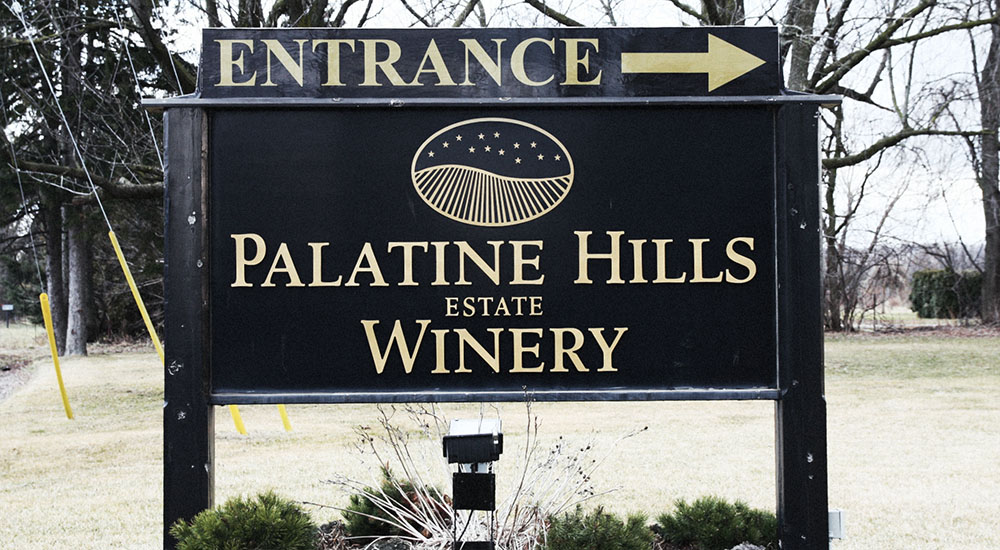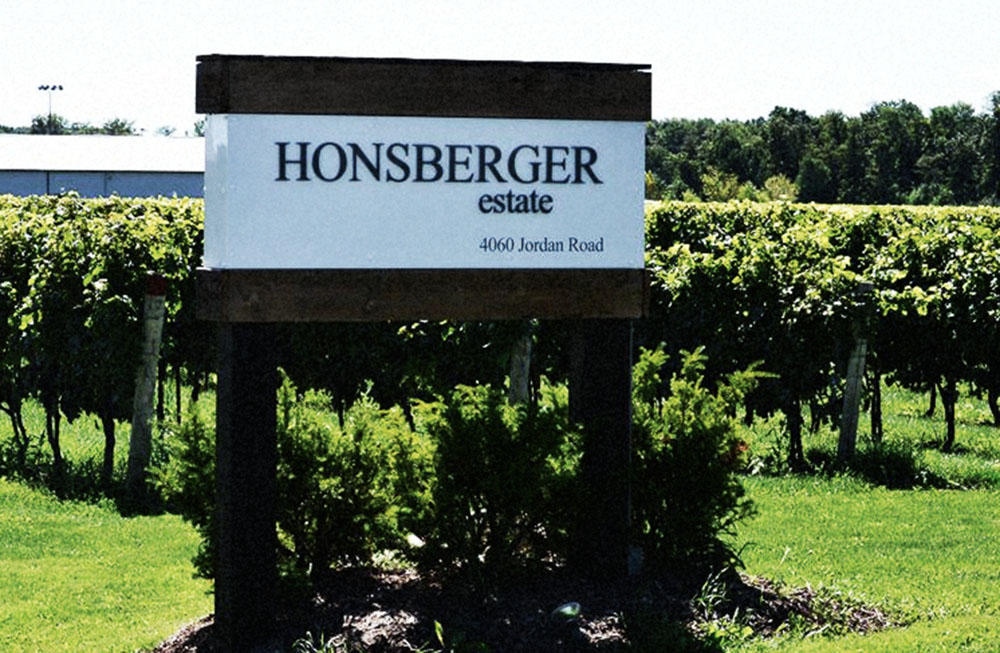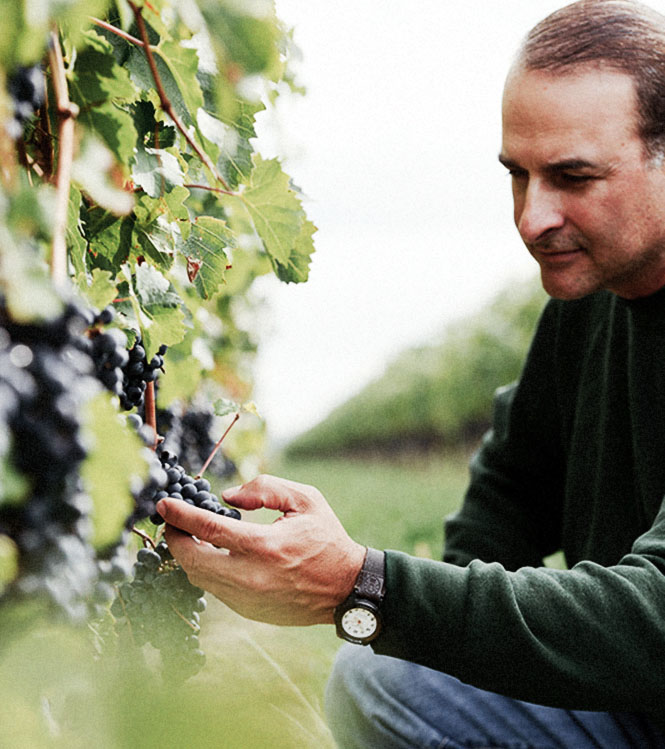
Anyone can start a winery — if they have enough cash. The Canadian wine industry has plenty of owners whose primary profession had nothing to do with grapes.
Stratus was created for David Feldberg, the owner of Teknion, an office furniture giant. Hidden Bench is the dream child of Harald Thiel, who made a killing when he sold his audio-visual service business. Peninsula Ridge was built by Norm Beal, an oil patch executive who just got tired of being an oil patch executive. Tawse and Redstone are owned by Moray Tawse, a highly successful mutual fund manager. Martin Malivoire was a master tinkerer who created some of the most spectacular special effects for big-budget Hollywood movies. He and his partner, Moira Saganski, wanted a weekend getaway with a vineyard view and ended up building a showpiece winery to go with it. Litigator Michael Kacaba built his eponymous winery after saving a farm from being developed into a subdivision. There are many others like them.
Don’t misunderstand me: there’s nothing wrong with investing millions in the land, vines, bricks, mortar, stainless steel and barrels that drive the wine business. Where would our beloved industry be without their valuable investment? What’s important is that these players all have one thing in common: they love wine.
But what if you’re a farmer, struggling to making ends meet by growing fruit for big corporate wineries. What does it take to transition from grape grower to wine producer?
The road is rife with obstacles. It’s not enough to have passion and a dream. Money is critical, but having a vineyard and knowing how to nurture it is half the battle. And it does offer some leverage with the banks.
John Neufeld at Palatine Hills Estate Winery
John Neufeld grew up on a farm and loved farming. Before graduating from the agriculture program at Guelph University at 19, he begged and borrowed to buy a 118-acre property on Lakeshore Road near Niagara-on-the-Lake. It was already planted with peaches, pears, plums, cherries and labrusca grapes, and he knew he had a ready market in the large canneries and wineries existing at that time.
Neufeld saw changes coming, though. He planted his first vinifera varieties (Gamay and Gewürztraminer) as early as 1975 and upgraded his vineyard regularly after that. When the first Icewines were developed in the early ’80s, he acquired a processing license and started producing Icewine juice for Brights. Things ran smoothly until the bountiful year of 1995. His sole customer, by then called Vincor, offered him one third the normal price for his surplus juice.
Never one to buckle under pressure, Neufeld hired winemaker Joe Pohorly to turn his juice into finished Icewine at his winery, Joseph’s Estate. Meanwhile, he applied for a manufacturer’s permit, which was soon granted.
After Neufeld established Palatine Hills, he entered his first commercial wine, a 1998 Vidal Icewine, in the Ontario Wine Awards and, to his surprise, took the grand prize of Wine of the Year. He continued to sell grapes, but in 2004 Vincor again forced his hand by insisting he choose between being solely a grower or losing his contract with them.
“In those days, it was much easier to transition than it is today,” he says. “Learning all the paperwork was the most onerous part.”
While growth progressed slowly at first, Neufeld took advantage of strong demand from U.S. wineries for high-quality juice. As former chairman of the Grape Growers Marketing Board, he had many contacts in the industry and was able to sell his excess juice in bulk to American producers until he could build up a local market for finished wine.
“There’s obvious benefit in the added value of our product,” he says, “but I work 365 days a year instead of the seasonal work I did as a grower.”
Neufeld now has 22 full-timer employees as compared with the eight seasonal workers he used to hire.
“The investment has been huge, but I have only one regret.” Neufeld concludes, “I should have started sooner.”

Barb Condotta at Honsberger Estate Winery
Barb Condotta (née Honsberger) hails from a long line of Pennsylvania Dutch farmers who immigrated in 1811. They farmed to survive and the family did thrive. Several branches of the Honsberger family tree now populate the Niagara Peninsula. When she took over her great grandfather’s tender fruit farm in 1999, apples and sour cherries were no longer financially rewarding.
Condotta’s early experience working at Barnes Wines and Jordan & Ste-Michelle Cellars during her university days convinced her that, if she was going to keep the farm in the family, a winery was the only way to go. By 2008, she could finally afford to tear out some of the fruit trees and plant grapes. After consulting with other growers, winemakers and a soil specialist, she planted Cabernet Franc and Riesling. Dealing with the government and the LCBO was the next hurdle.
“It’s a long process,” Condotta sighs. “I thought it would never happen. There were so many rules and regulations at the time.”
To make ends meet, she worked in a travel agency and as a dental assistant and, to this day during the winter months, serves as a flight attendant. In the summer season, Condotta hosts a lot of weddings at the winery, and together with her daughter Britney, a Cordon Bleu chef, runs an outdoor bistro with a wood-fired pizza oven.
Grower Wines – The Tasting Notes
Palatine Hills Estate Winery [VQA=Niagara Lakeshore]
Palatine Hills Estate Winery 1812 Unoaked Chardonnay 2015 ($12)
An InterVin “Best Value” Chardonnay, this snappy, light white offers clean flavours of lemon, apple and pear. Lovely with shrimp pasta, fried chicken or buttered popcorn.
Palatine Hills Estate Winery 1812 Merlot/Cabernet 2015 ($13)
An easy-drinking style, with dark fruit notes, mid-weight and a lightly spiced finish. Benefits from a 20-minute chill. A classic cheeseburger wine. For early drinking.
Palatine Hills Estate Winery Riesling 2015 ($13)
Honeyed with a clean, dry-ish aftertaste thanks to zippy acidity. Exotic flavours of lemon-spritzed nectarine and papaya. For patio sipping or paired with light curries, Mexican fish tacos or a spicy Asian occasion.
Palatine Hills Estate Winery Neufeld Vineyard Chardonnay 2012 ($16)
Big, elegant and subtly oaky with a mouth-filling dollop of puréed pear and French vanilla and a long, lemon crème brûlé aftertaste. Brilliant with a creamy scallop dish, veal piccata or simple roast chicken.
Palatine Hills Estate Winery Neufeld Vineyard Merlot 2012 ($35)
An Ontario Wine Awards gold medal winner. Sensational concentration, complexity and finesse with billowing aromatics of black cherry, blueberry and plum. Long on the palate and lush in flavours. A Sunday dinner wine for rare roast beef and Yorkshire pudding.
Honsberger Estate Winery [Non-VQA, but all estate-grown in the Lincoln Lakeshore appellation.]
Honsberger Estate Winery Riesling 2015 ($21.95)
Fruity aromas of peach and grapefruit marmalade, it’s barely off-dry, with medium body and racy acidity. Pairing with pan-fried wild cod and broiled asparagus may make you swoon with delight.
Honsberger Estate Winery Cabernet Franc 2014 ($25.95)
Fragrant notes of red and black currants with a herbal nuance. A lighter vintage offering much pleasure in earlier drinking. A country pâté or charcuterie board will do nicely.
Honsberger Estate Winery Cabernet Franc Reserve 2012 ($55)
The single best barrel of the winery’s first vintage. Potent and concentrated, with complexity and depth. Ripe black raspberry notes, supple texture and a rich, savoury, ethereal finish. Enjoy with a striploin or ribeye steak. Decant twice before serving.

Lou Puglisi at PondView Estate Winery
In 1974, Giuseppe (Joe) Puglisi planted vines on his newly acquired, 12-acre lot on Line 2 near Niagara-on-the-Lake. His son Luciano (Lou) grew up “between the vines” and soon discovered how hard vineyard chores could be.
By age 18, he’d saved $10,000 and was ready to buy himself a fast-and-fancy car. However, Puglisi Sr intervened with a man-to-man talk and young Lou was persuaded to put his hard-earned cash into land instead of a car that would depreciate quickly. When a 20-acre parcel adjacent to the family farm came available in 1988, Puglisi Jr snapped it up. He planted the vineyard and in the mid-’90s also took over the remainder of the family holdings.
Over the years, Lou Puglisi sold his grapes to Cartier Wines, Hillebrand, Château des Charmes and Strewn, and eventually, to Pillitteri exclusively. For his meticulously nurtured vineyards, he was chosen Ontario’s 2008 Grape King, which led to much travel and speech-making around the country.
On a visit to the Okanagan, he encountered many small growers who had transformed their tiny farms into estate wineries. Puglisi was inspired. If they could do it, he could too. It would be a big investment and the work would be harder, but he concluded that producing a value-added product was surely the way to go.
“We thought we could just put up a building and buy some equipment, and away we go,” he says. “Then we discovered just how steep the learning curve was, dealing with the paperwork and liquor board regulations. It was horrendous.”
Puglisi also was frustrated by the huge margins taken by the government, as well as the constant demands for investment in product testing, marketing plans, in-store promotion or magazine advertising.
“Every time I shook someone’s hand,” he laughs, “I’d have to count my fingers.”
Today, he spends his energy finding way to get customers to visit his retail shop because that’s the only way he can make a profit.
Puglisi has no regrets, though. He says winemaking has opened his eyes to the world and given him opportunities to travel, to see other regions and cultures, to meet growers and share their experiences. It has made him better appreciate the Ontario industry, recognizing the quality of what he can achieve and immense satisfaction in being part of a long-term adventure that starts with the soil.
PondView Estate Winery [VQA=Four Mile Creek]
PondView Estate Winery Dragonfly Pinot Grigio 2016 [Niagara Peninsula] ($16.95)
A clean, unpretentious sipper with lemony aromas and stone fruit flavours. Balanced and fresh with notes of bitter almond in the finish. Pour as an apéro with olives or pistachios.
PondView Estate Winery Bella Terra Chardonnay 2014 ($24.95)
Full-blown exotic bouquet of mango, honey, vanilla, caramel and cashews with a rich, balanced, lingering toasty finish. Try with shellfish pasta, lobster risotto or classic osso buco.
PondView Estate Winery Bella Terra Cabernet Franc 2013 ($39.95)
Vibrant nose of tart cherry and raspberry, with hints of clove, green olive and herbs. Bright, youthful acidity, silky mouthfeel and clean, balanced finish. Partner with barbecued shish kebab and grilled vegetables.
PondView Estate Winery Bella Terra Cabernet Sauvignon 2013 ($39.95)
Sweet nose of wild raspberry, cassis and plum. Medium body, juicy acidity, solid tannic structure and a pure varietal finish. My preferred pairing would include grilled or broiled Ontario-raised lamb chops.
PondView Estate Winery Bella Terra Meritage 2012 ($44.95)
This was a great vintage and the winery made the most of it. Rich colour, powerful nose, velvety mouthfeel and long, long finish. Black currant, black cherry compote, black olives, black tea and black pepper notes are seamlessly integrated in the aftertaste. Ready to go but can still age, so save for a special filet mignon or Beef Wellington occasion.
PondView Estate Winery Bella Terra Cabernet Appassimento 2013 ($70)
Six weeks on the drying rack, three weeks of skin contact and 20 months in new French oak produced a Cab-Cab blend that’s 16.5% alc./vol. with super-concentrated flavours, both sweet and savoury. With aromas of dark fruits, dried cherries, cinnamon, smoked paprika, fresh-roasted coffee beans, tarred leather and a whole lot more, this thickly textured wine shows best with strong dishes, such as spicy charcuterie, game, beef stew, wild mushroom risotto, hunks of fresh Parmigiano-Reggiano cheese or dark chocolate squares. Cellar for at least 5 years and then open a day before serving.
